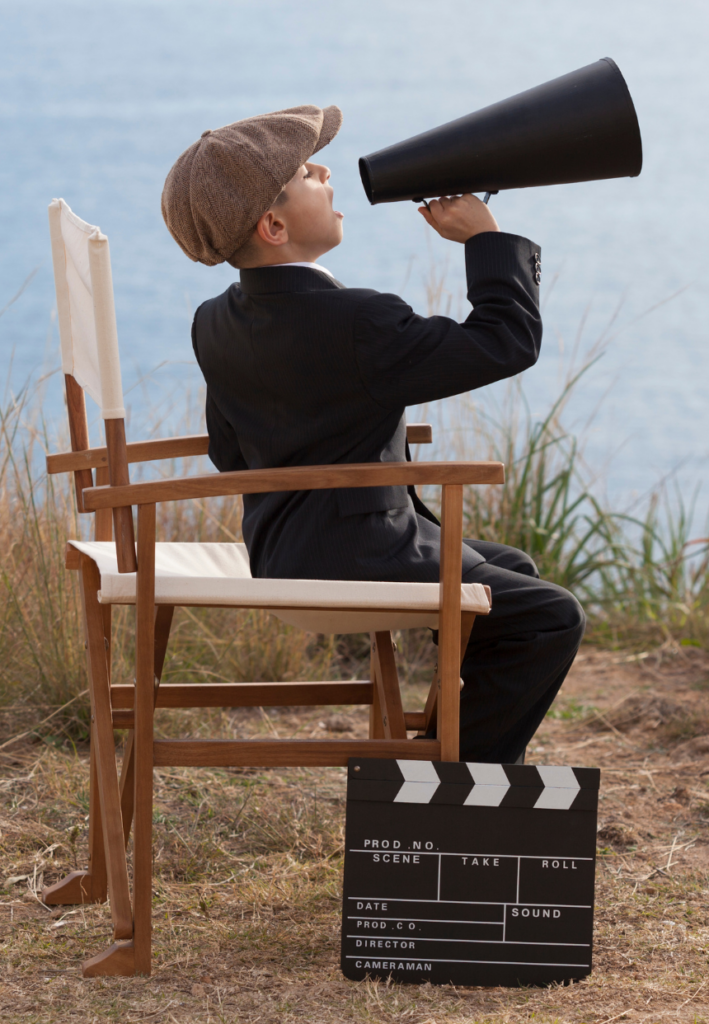by Carole Dean
From a recent interview in The Hollywood Reporter with 2024 Oscar nominee Sterling K. Brown.
Hollywood Reporter: Was an Oscar nomination or winning an Academy Award on your actor vision board?
Sterling K. Brown: I would say so.
I want to dive into a powerful tool that can truly transform your filmmaking journey and elevate your career: vision boards.
As someone deeply invested in nurturing indie talent and fostering creativity, I believe wholeheartedly in the magic of manifesting our dreams through visualization.

Picture this: you’re sitting in a cluttered room, surrounded by scraps of paper, scribbled notes, and a myriad of ideas swirling in your head.
You’ve got a passion project brewing, but you’re feeling stuck, unsure of how to turn your vision into reality.
This is where the vision board steps in to work its wonders.
Now, you might be thinking, “Isn’t a vision board just a collage of pretty pictures and quotes?” Well, it’s so much more than that. A vision board is a tangible representation of your goals, aspirations, and deepest desires.
It’s a visual roadmap that helps clarify your intentions and keep you focused on what truly matters.
Here are ten tips for making a vision board for your film:
Film Aesthetic Collage:
Include visuals that capture the aesthetic and mood you envision for your indie film. This could involve color schemes, textures, and images that convey the atmosphere of your project.
Character Inspirations:
Feature images or descriptions representing your characters. Find actors, real people, or even fictional characters that embody the personalities and traits you want to portray in your indie film.
Location Scouting:
Add pictures of locations or settings that align with the backdrop of your indie film. This can help you visualize the environment and set the tone for your storytelling.
Storyboarding Elements:
Incorporate elements of your storyboards. Include sketches, visuals, or snippets that represent key scenes or sequences in your film.
Genre and Style Indicators:
Use symbols, words, or images that signify the genre and style of your indie film. Whether it’s drama, comedy, thriller, or a mix, make sure your vision board reflects the essence of your project.
Budget and Resources:
If applicable, include images or notes related to your budgeting and resource needs. This could be representations of equipment, funding sources, or potential collaborators.
Film Festival Goals:
If submitting to film festivals is part of your plan, feature logos or images associated with those festivals. Visualize the achievement of screening your indie film at prestigious events.
Collaborator Images:
Showcase images or names of potential collaborators – cinematographers, actors, producers – to manifest the collaborative aspect of indie filmmaking.
Quotes and Inspirational Words:
Integrate motivational quotes, affirmations, or words that inspire you. These can serve as constant reminders of your passion and commitment to your indie filmmaking journey.
Distribution and Audience:
Include symbols or visuals representing your goals for distribution and reaching your target audience. This could involve logos of streaming platforms, audience reactions, or successful indie film examples.
Remember to arrange these elements in a way that feels intuitive and visually compelling to you.
Your vision board should serve as a source of motivation and focus, aligning with your aspirations for your indie film.
Now, I know what you’re thinking: “But Carole, I’m a filmmaker, not a professional collagist!”
Fear not, for creating a vision board is as easy as 1-2-3. Simply gather your materials – a corkboard, magazines, scissors, glue – and let your intuition be your guide. There are no rules here, no right or wrong way to do it. Trust your instincts and let your creativity flow freely.
And remember, a vision board is not a one-and-done exercise. It’s a living, breathing entity that evolves with you.
As you progress on your filmmaking journey and your goals shift and expand, don’t be afraid to update your board accordingly. Think of it as a visual journal of your growth and transformation.
Carole Dean is president and founder of From the Heart Productions; a 501(c)3 non- profit that offers the Roy W. Dean Film Grants and fiscal sponsorship for independent filmmakers.
profit that offers the Roy W. Dean Film Grants and fiscal sponsorship for independent filmmakers.
She is creator and instructor of Learn Producing: The Ultimate Course for Indie Film Production. 26 classes which will teach indie filmmakers how to produce their films.
She hosts the weekly podcast, The Art of Film Funding, interviewing those involved in all aspects of indie film production. She is also the author of The Art of Film Funding, 2nd Edition: Alternative Financing Concepts. See IMDB for producing credits

